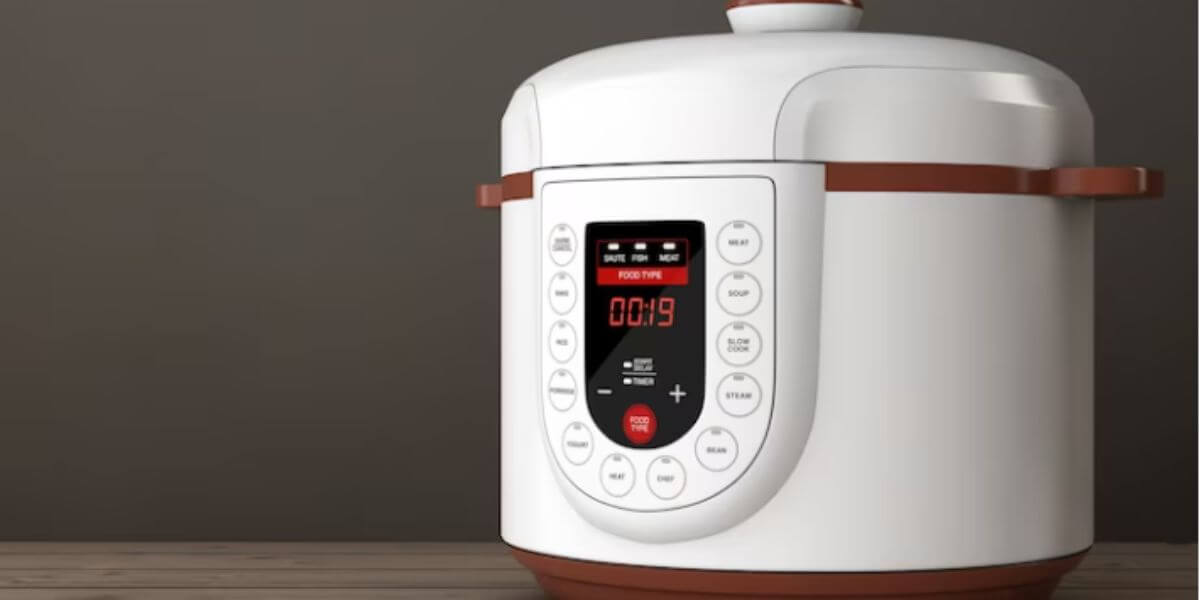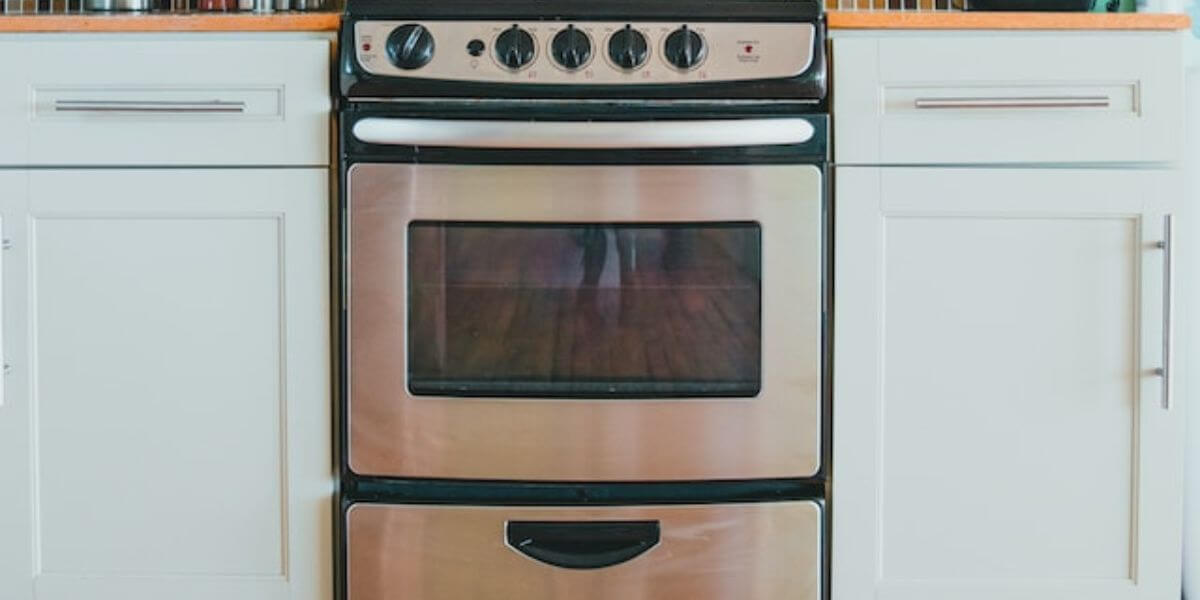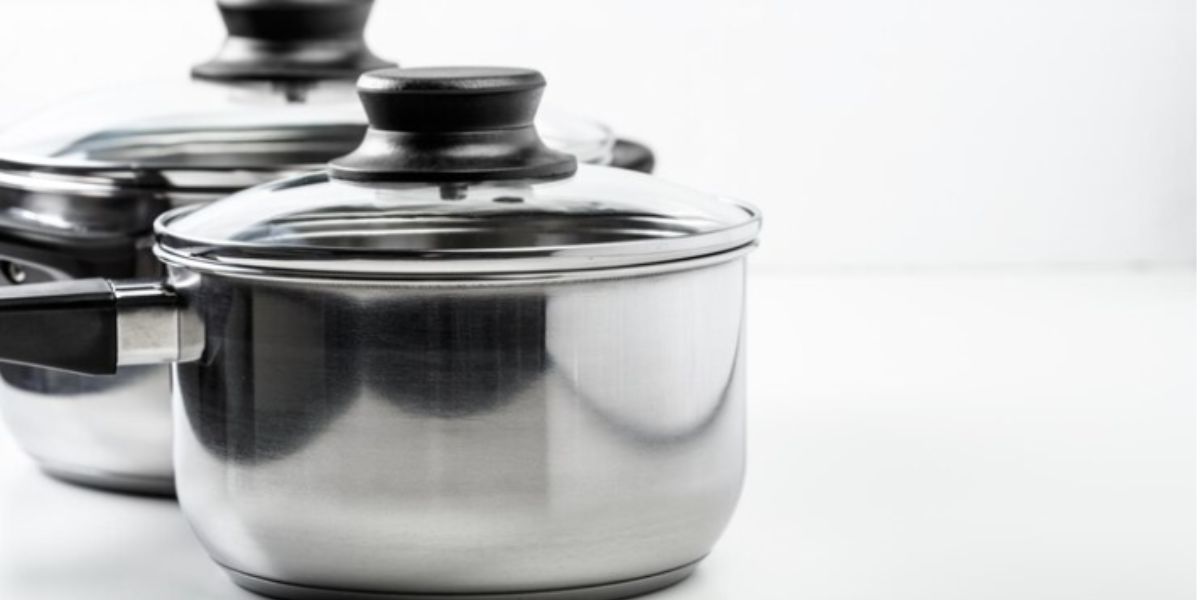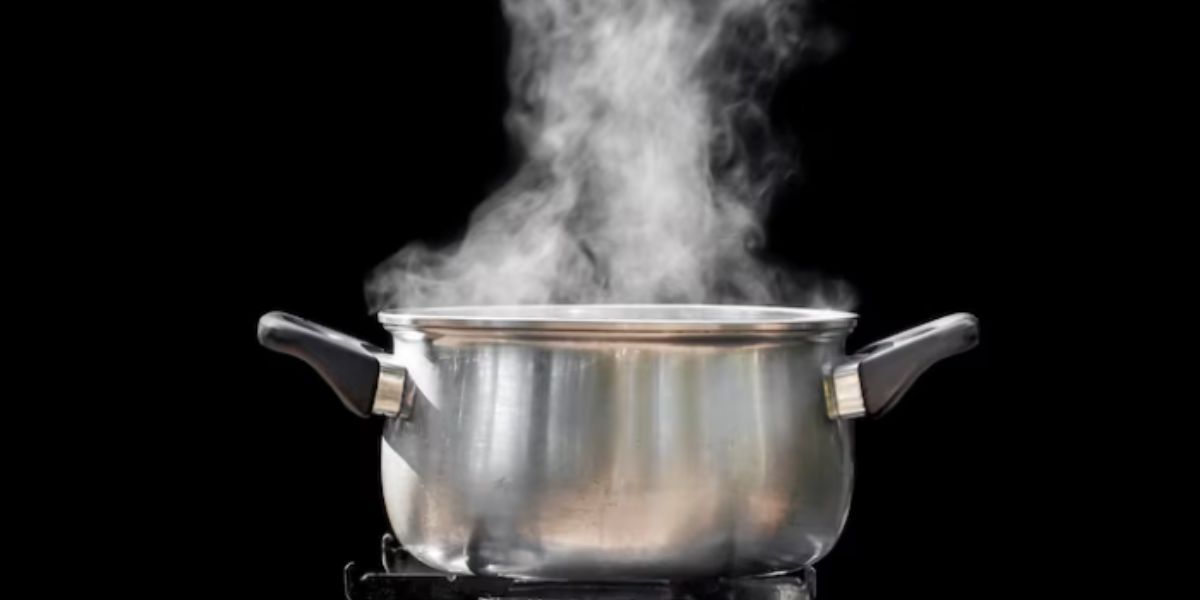Sous Vide vs Pressure Cooker: Which One is Better?
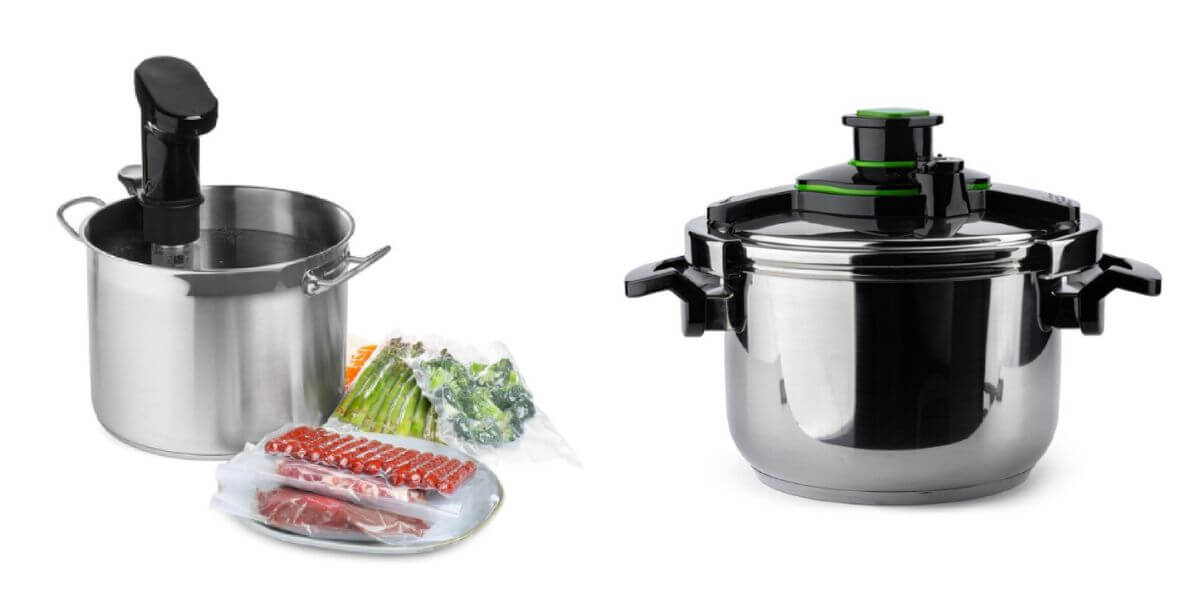

In the modern cooking world, various techniques and appliances have emerged to make our culinary experience more enjoyable and convenient. Two popular cooking methods that have gained significant attention are sous vide and pressure cooking. Although both methods have their merits, they differ in processes, outcomes, and applications. In this article, we’ll discuss the details of sous vide vs pressure cooker, comparing their features, benefits, and the foods they excel at. So, let’s dive in and discover the differences between these two cooking techniques.
What is sous vide cooking?
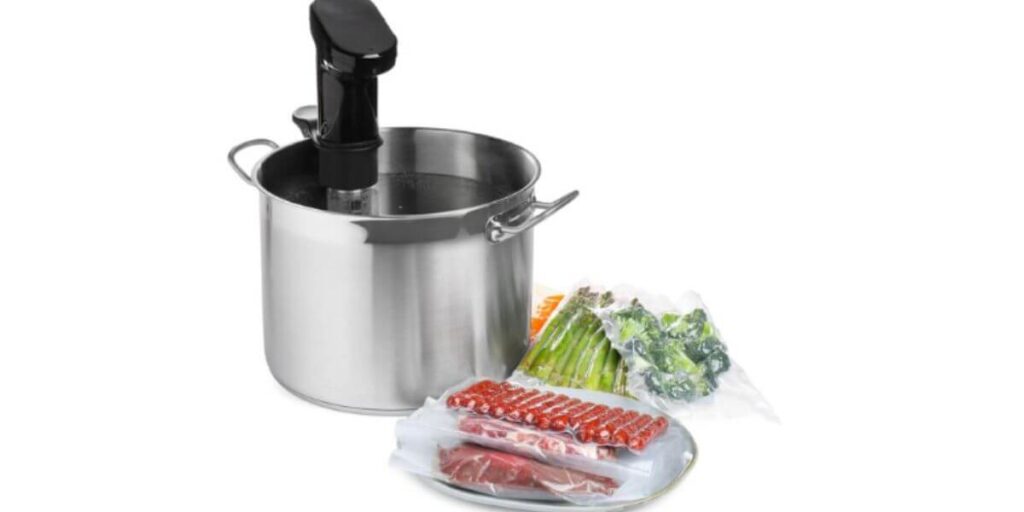
Sous vide cooking is cooking food at a precisely controlled temperature in a controlled water bath. “sous vide” is French for “under vacuum,” which refers to vacuum-sealing ingredients in a bag before cooking. This technique was initially developed for professional chefs but has become increasingly popular in home kitchens.
How does sous vide cooking work?
Sous vide cooking relies on precise temperature control to achieve consistent results. The food, usually placed in a vacuum-sealed bag, is immersed in a water bath heated to a certain temperature. This gentle and slow cooking process ensures even heat distribution and allows food to cook evenly. Sous vide machines, also known as immersion circulators, maintain the temperature of the water with great precision, ensuring the desired level of doneness.
Benefits of sous vide cooking
Sous vide cooking offers several advantages over traditional cooking methods:
Enhanced Flavor: By cooking food in a sealed bag, flavors, and aromas are locked in resulting in intense flavor profiles.
Moisture Retention: The sealed environment prevents moisture loss, keeping food moist and tender.
Precise donation: Sus video enables precise control over the desired donation level, ensuring consistent results every time.
No overcooking: As the temperature is precisely controlled, the risk of overcooking is minimized, allowing for perfectly cooked food.
Convenience: Sous vide cooking allows for improved food preparation, as you can cook and store your food in the same bag.
Popular sous vide dishes
Sous vide is particularly suitable for certain types of food, such as:
Steak: Achieve a perfectly juicy and tender steak with sous vide machine, then finish it with a quick sear for a caramelized crust.
Fish: Prepare delicate fillets with tenderness, ensuring a moist and flaky texture.
Eggs: Sous vide cooking provides precise control over cooking temperature, allowing you to achieve consistent and perfectly cooked eggs.
Vegetables: Sous vide an excellent method for cooking vegetables, as it preserves their vibrant color, flavor and nutrients.
Recommended Sous Vide to buy
Anova Culinary Sous Vide Precision Cooker
Anova is a well-known brand in the SoC video industry. Their precision cookers are a popular choice among home cooks and professionals. It offers precise temperature control, a user-friendly interface and a powerful heating element. The Anova Culinary Sous Vide Precision Cooker is accessible with Android and iOS devices, allowing you to control and monitor your cooking remotely.
PROS
CONS
ChefSteps Jules Sous Videos
ChefSteps Joule Sous Vide is a compact and powerful immersion circular. It boasts a sleek design and offers excellent temperature accuracy. One of its standout features is its integration with the Zool app, which offers a wide range of recipes and step-by-step cooking guides. The app also allows for voice control and notifications, making cooking with the ChefSteps Joule Sous Vide a seamless experience.
PROS
CONS
SousPreme multi-function sous vide cooker
The SousPreme Multi-Function Sous Vide Cooker is a versatile option that combines sous vide cooking with added functionality. Apart from sous vide, it also works as a yogurt maker, rice cooker, and slow cooker. This all-in-one appliance is a great choice for those who want to expand their culinary repertoire without cluttering their kitchen with multiple devices.
PROS
CONS
What is a pressure cooker?
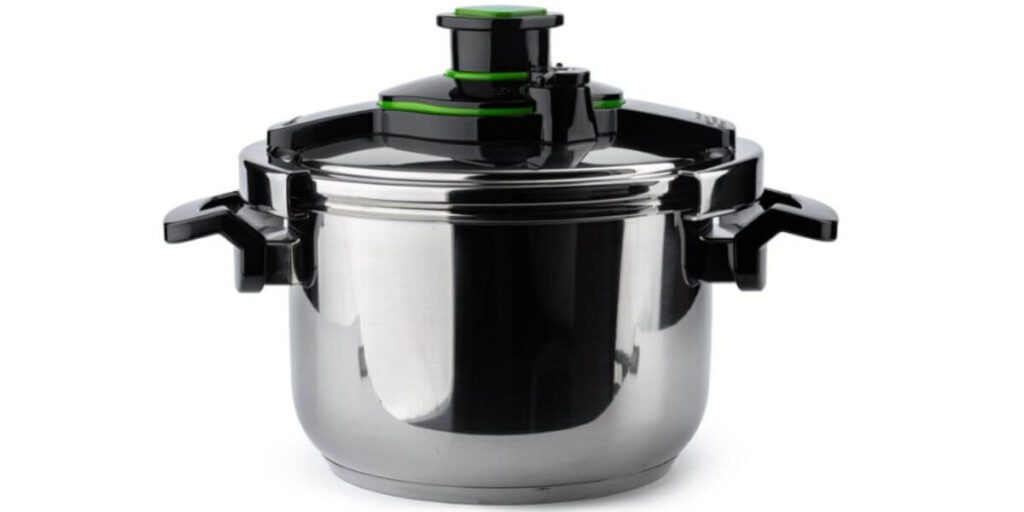

A pressure cooker is a sealed vessel with a locking lid that uses steam pressure to cook food quickly. It is a versatile kitchen appliance that has been used for years to reduce the cooking time of various dishes.
How does a pressure cooker work?
Pressure cookers function by trapping steam inside a tightly closed vessel, raising the pressure and boiling point of the water. This high pressure and temperature accelerate the cooking process, significantly reducing the time required to cook food.
Advantages of pressure cooking
Pressure cooking offers several advantages that make it an attractive cooking method:
Time efficiency: Pressure cookers can significantly reduce cooking time, making them ideal for busy individuals or families.
Retained nutrients: Short cooking times help preserve the nutritional value of foods, as vitamins and minerals are less likely to break down.
Tenderizing Tough Cuts: Pressure cooking is excellent for tenderizing tough cuts of meat, making them tender and flavorful.
Energy Saving: By cooking food faster, pressure cookers consume less energy than traditional cooking methods.
One-pot convenience: Pressure cookers allow for one-pot cooking, reducing the need for multiple dishes and simplifying the cleanup process.
Popular pressure cooker recipes
Pressure cookers are suitable for a wide range of recipes, including:
Beans and Legumes: Pressure cooking significantly reduces the cooking time of beans and legumes, making them tender and creamy.
Stews and Soups: Pressure cookers are adept at making rich and flavorful stews and soups in a fraction of the time required by traditional methods.
Rice and Grains: Use a pressure cooker to achieve perfectly cooked rice and grains with minimal effort.
Braised Meats: Tenderize tough cuts of meat and infuse flavors by pressure-cooking with aromatics.
Recommended Pressure Cooker to buy
Instant Pot Duo Evo Plus
Instant Pot Duo Evo Plus is a versatile and very popular pressure cooker. It features multiple cooking functions, including pressure cooking, slow cooking, sautéing and more. An easy-to-use control panel and a large LCD screen offer convenience and precise cooking settings. The Instant Pot Duo Evo Plus has different sizes to meet different cooking needs.
PROS
CONS
Ninja Foodie Pressure Cooker
The Ninja Foodie Pressure Cooker is a multipurpose device that combines the capabilities of an air fryer and a pressure cooker. It offers the ability to pressure cook, air crisp, bake, roast and more. With its TenderCrisp technology, it allows for a crispy finish on food. The Ninja Foodie Pressure Cooker comes with a user-friendly control panel and a range of pre-programmed settings for ease of use.
PROS
CONS
Cuisinart CPC-600N1 Pressure Cooker
The Cuisinart CPC-600N1 is a reliable and affordable pressure cooker option. It offers a 6-quart capacity, making it perfect for small to medium-sized families. The intuitive control panel allows an easy selection of cooking programs and adjustments to cooking time and pressure. The Cuisinart CPC-600N1 is also durable and comes with a trivet for steaming.
PROS
CONS
Sous Vide vs Pressure Cooker: A Comparison
Now that we’ve explored the basics of sous vide and pressure cooking, let’s compare them based on several factors:
Accuracy and control
Sous vide cooking offers unparalleled precision and control over the cooking process. Setting and maintaining water bath temperature ensures consistent and precise results. On the other hand, pressure cookers provide some control during cooking but cannot adjust the temperature during cooking.
Cooking time
Sous vide cooking is known for its long cooking times, as a low and slow method is essential to achieve the desired results. Pressure cooking, on the other hand, significantly reduces cooking time, making it ideal for those who need quick and efficient food preparation.
Texture and tenderness
Sous vide cooking creates a tender and juicy texture, especially for meats and delicate proteins. The collagen is broken down by the lengthy cooking procedure, which melts away the softness of your skin. Pressure cooking also tenderizes tough cuts of meat but cannot achieve the same precision and consistency in texture as sous vide.
Flavor Infusion
Sous vide for an infusion of flavor in cooking, as the food is cooked in its juices and can be combined with aromatics and seasonings in vacuum-sealed bags. Pressure cooking enhances flavor by mixing ingredients quickly, but the flavors don’t penetrate as deeply as food.
Versatility and Adaptability
Sous vide cooking is versatile and suitable for various dishes, including meat, fish, vegetables, and desserts. Pressure cooking is also versatile but especially suitable for recipes with reduced cooking time, such as stews, soups and beans.
Conclusion
In conclusion, sous vide, and pressure cooking methods have unique advantages and applications in the kitchen. Sous vide cooking offers precise control, enhanced flavor, and tender texture, making it ideal for meat, fish, and vegetables. On the other hand, pressure cooking offers time efficiency, retained nutrients, and tenderizing ability, making it suitable for stews, soups, and grains.
Ultimately, the choice between sous vide, and pressure cooking depends on your cooking preferences, time constraints, and the specific dishes you want to prepare. Whether you choose the slow and controlled method of sous vide or the quick and efficient method of pressure cooking, both can enhance your culinary experience and help you create delicious meals.
Frequently Asked Questions
Can I use a pressure cooker for sous vide cooking?
No, a pressure cooker is not suitable for sous vide cooking. Sous vide requires precise temperature control, which can only be achieved with dedicated sous vide machine or immersion circulator.
Can I achieve similar results with traditional cooking methods?
While traditional cooking methods can produce delicious results, sous vide and pressure cooking offers unique advantages that are difficult to replicate. Sous vide precise doneness and enhanced flavor, while pressure cooking reduces cooking time and tenderizes tough cuts of meat.
Are there any safety concerns with pressure cookers?
Modern pressure cookers have safety features, such as pressure release valves and locking mechanisms, to prevent accidents. However, following the manufacturer’s instructions and taking precautions when using a pressure cooker is essential.
Which cooking method is more beginner-friendly?
Both sous vide, and pressure cooking can be learned and mastered with practice. However, pressure cooking can be more beginner-friendly due to its shorter cooking time and the availability of recipes specifically designed for pressure cookers.
Can I combine sous vide and pressure cooking techniques?
Yes, you can combine the two techniques in certain recipes. For example, sear a piece of meat to achieve the desired doneness and then finish it in a pressure cooker to make it more tender.
